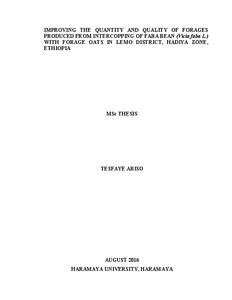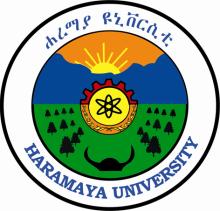Resource information
Faba bean (Vicia faba L.), also called broad bean or horse bean is an annual crop, which mainly grows in the highlands of Ethiopia for human consumption. The objective of this study was to improve the quantity and quality of forages produced from intercropping of faba bean (Vicia faba L.) with forage oats (Avena sativa L.) on forage biomass, straw, grain yields, and straw quality. Farmers have an experience of not weeding faba bean plots to get more weed biomass. The field trial involved each farmer has 2(10×30) m2 large plots and each plot divided in to (3*10) m2 for two faba bean varieties and three treatment practices The land was selected carefully for uniformity of slope and fertility. Soil was prepared carefully before sowing. Samples were taken from each treatment plots beginning before soil samples from the upper 15 cm to lower 30cm, the final after harvest soil sample from each treatment plot. The highest (P<0.01) tiller count, number of pods per plant (PPP), seeds per pod (SPP) and grain yield was under improved management, whereas the lowest (P<0.01) was obtained from intercropping management practice. The total feed dry matter (DM), crude protein (CP) and metabolizable energy yields were greater (P<0.05) under intercropping than the remaining management practices. Gebelcho under intercropping had the highest CP content (9.53%) and the lowest CP contents were observed for Dosha under traditional management (6.84%). The mean CP content was highest (P<0.05) under intercropping and lowest (P<0.05) in traditional management practice. The NDF content was lower under intercropping than the remaining management practices. In vitro true organic matter digestibility value (%) ranged from 55.9 (Gebelcho) traditional to 65.9 (Dosha) intercropping management practice. In vitro true dry matter digestibility (IVTDMD) value was higher (P<0.05) under intercropping than other management practices. Generally intercropping management gave higher net benefit and particularly intercropping the variety Dossha (41869ETB ha-1) gave highest net benefit as compared to the remaining variety and management practices. It can be concluded that intercropping faba bean with oats could be feasible to provide reasonable nutritive value of forages without or less affecting the faba bean grain yield in the crop-livestock production systems of Ethiopia.



